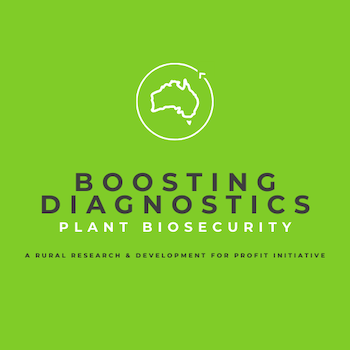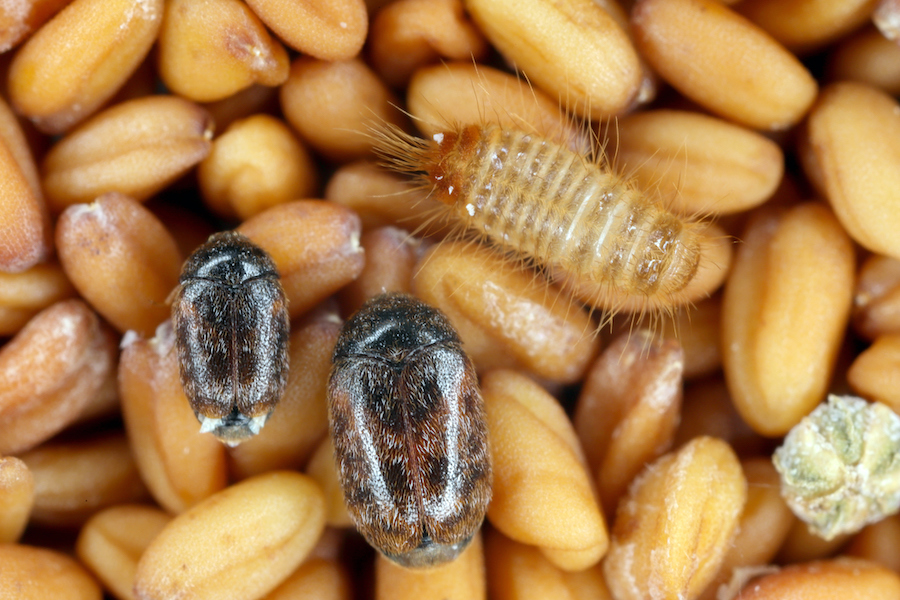An exotic pest or disease incursion can have a significant impact on production, trade and market access for grain industries. When a new pest or disease arrives in Australia, our ability to contain and eradicate the threat depends on how rapidly we can accurately diagnose the problem.
Australia has always had a strong biosecurity system with a network of researchers working in the background to support the diagnosis and help prevent the spread of biosecurity threats. These scientists are not the frontline that growers see on their farm, but they are the backbone that maintains strong biosecurity preparedness.
However, in 2019, Australian biosecurity organisations realised that the ability of plant-based industries to respond in times of pest and disease incursions needed a boost.
The Australian Government and plant-based research and development corporations, including GRDC, joined forces to develop an all-plant R&D project to train more scientists and develop faster, more-efficient methods of detecting and diagnosing exotic threats.
The ‘Boosting Diagnostic Capacity for Plant Production Industries’ project focuses on diagnostics for high-priority exotic pests and diseases. The project is supported by funding from the Australian Government Department of Agriculture, Fisheries and Forestry as part of its Rural Research and Development for Profit program.
Through the project, plant industries including grains, cotton, fruit and vegetables, wine and table grapes, forestry and sugar are developing new or revised and updated diagnostic tools for a range of exotic pests and diseases. At the same time, new scientists are learning the skills of diagnosing pests and diseases as they collaborate with growers on farms.

Khapra beetles (pictured below), exotic nematodes, begomoviruses and poleroviruses, and exotic Fusarium oxysporum – all potential threats to the grains industry – are a focus of projects within the Boosting Diagnostic Capacity project. While these pests are not present in Australia, it is reassuring that work is continuing in the background to help prevent them becoming a problem for Australian grain growers if they do enter the country.
The South Australian Research and Development Institute (SARDI) is developing diagnostic capability for Khapra beetle using imaging and genetic sequencing. The work includes validation of tests previously developed for Khapra beetle to enable a high quantity of surveillance testing. This work will help support area freedom and market access for grain producers, so they can continue to access important export markets.
The Queensland Department of Agriculture and Fisheries (DAF) is developing cheap screening tests for exotic viruses that are easy to use in the field and provide results in a short period of time.
Dr Murray Sharman is working on better techniques to identify aphid-transmitted viruses including turnip yellows virus, cucumber mosaic virus and alfalfa mosaic viruses. Cucumber mosaic virus causes severe disease in lentils, chickpeas and lupins, while alfalfa mosaic virus affects lucerne, chickpeas, faba beans, field peas and lentils.
CSIRO is building expertise in nematode diagnostics in the grains industry. This involves training young scientists while ensuring identification protocols are advanced. The research is delivering taxonomic knowledge of cyst nematodes such as cereal cyst nematode and nematodes that impact soybeans, barley and chickpeas to develop improved commercial diagnostic tests.
Identification factsheets
As part of the program, a series of identification fact sheets have been produced describing exotic, high-priority biosecurity threats to plant industries. The grain-specific fact sheets cover pests such as grain stem gall midges, wheat stem sawflies, turnip moth and sunn pest. Each fact sheet outlines how to identify the priority plant pests and what to do if you suspect them.

Adult Khapra beetles. Photo: Tomasz Klejdysz
Grain stem gall midges are three related species of tiny flies. Their adult stages are short-lived, but the larval stages of these midges are serious pests of grain crops overseas. Download the factsheet.
Wheat stem sawfly and European wheat stem sawfly are wasp-like insects. Their larvae attack a wide range of cereal crops. There are no effective chemical control methods for these pests because they are very effectively shielded inside plant stems for most of their life cycle. Download the factsheet.
Sunn pest is a group of sap feeding bugs, of which Eurygaster integriceps is a serious pest of cereal grain crops overseas. Juvenile stages feed on cereals from the booting stage to the end of the dough development stage. Younger nymphs tend to feed on the leaves, while the final juvenile stage and adults are more likely to feed directly on grain kernels. Download the factsheet.
The turnip moth is found throughout Asia, the Middle East and Africa. It is not found in Australia. It affects a wide range of plants including leafy vegetables, grains, crops, cereal, tea and coffee crops. Look for unusual levels of damage including cut stems or abnormal leaf fall in grain crops. Download the factsheet.
Grain growers and crop consultants are encouraged to download the relevant fact sheets and refer to them. If you see anything suspicious, call the Exotic Plant Pest Hotline 1800 084 881.
For advice on grains biosecurity, resources or biosecurity signs, growers should contact their state Grains Biosecurity Officer.
More information: Plant Biosecurity Diagnostics resources; State Grain Biosecurity Officers.

























































